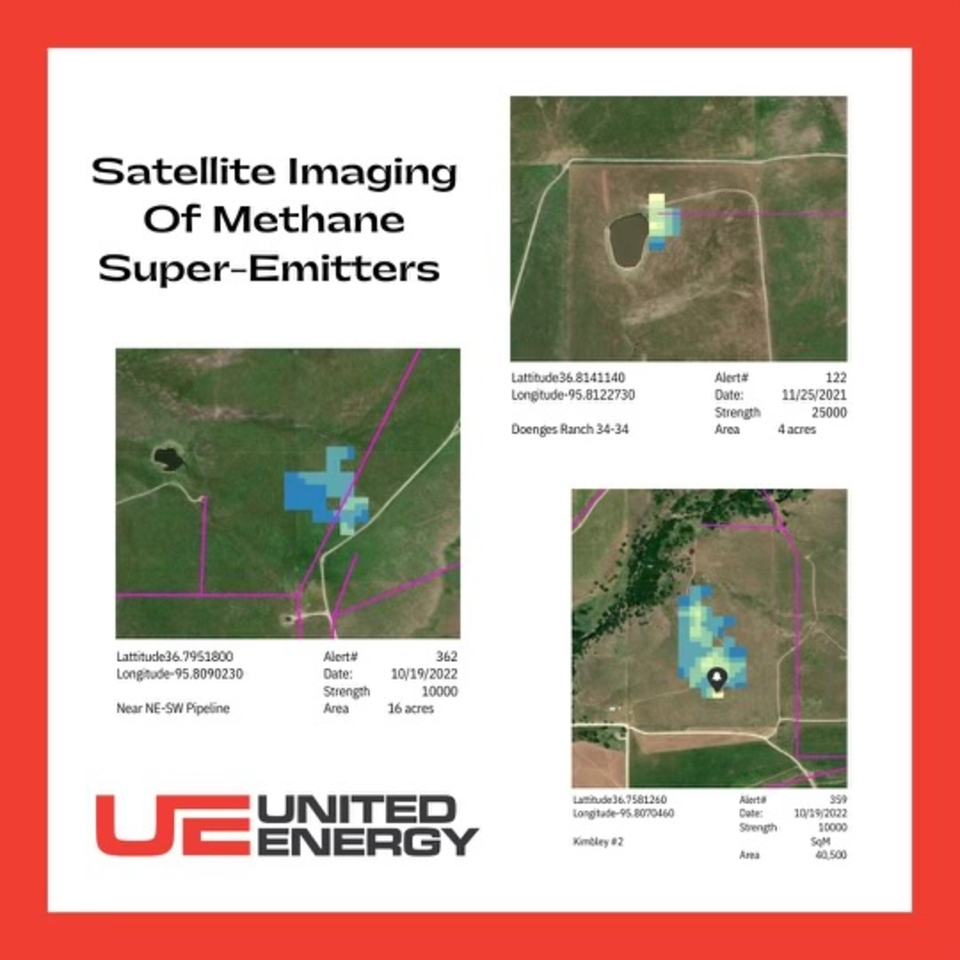Methane and the Gas and Oil Industry – The Percentages May Be Less Than You Thought

"Our capital investment in high-resolution satellite imaging will provide dividends far beyond monetary returns."
UNRG Embraces Satellite Technology to Detect Methane Gas Leaks
United Energy is continually improving production methods, procedures, and use of technologies to increase returns for our shareholders. One such feature is using geo-analytics and accessing satellite imaging to monitor methane emissions. Satellite imaging allows us to identify and measure observable leaks at production sites. United Energy can then expediently repair leaks, saving time and money.
To this end, UNRG has partnered with a company specializing in satellite imaging capable of locating and measuring methane emissions. In so doing, UNRG is taking appropriate precautions in the effort to cost-effectively reduce emissions and our carbon footprint. These measurements deliver tangible targets for UNRG as owner/site operators and underscores our commitment to reducing methane emissions.
Methane and the Gas and Oil Industry – The Percentages May Be Less Than You Thought
Methane accounts for only about 20% of global emissions. One estimate reveals that worldwide, fossil fuels make up about 2% of global methane emissions overall. Other contributing sources of methane gas are livestock, rice cultivation, waste (landfills), insects, wetlands, and biomass burning. Together just these sources alone result in almost 7 times as much methane than all oil and gas sources worldwide. On a grand scale, methane is considered a “very short-lived” greenhouse gas with a lifespan of about 12 years. In comparison to carbon dioxide, which can exist in the atmosphere for up to thousands of years, that’s good news.
How Does Satellite Imaging Work?
Emerging satellite-based imaging systems work by capturing UV, visible, and short-wave infrared atmospheric information via a network of satellites. Light wavelengths provide a mineral composition map of land surfaces and allow for tracking emissions in near real-time. Photo capture of sporadic methane discharges from plumes, venting, or gas flares, provide a visual that previously may have been elusive.
Savings in Capturing Wasted Gas
The benefit to the fossil fuel industry detecting leaks at compressor stations, natural gas pipelines, and storage tanks is undeniable. An efficient system for identifying and plugging leaks will also provide significant savings by preventing a loss in wasted gas. UNRG is adding another layer to responsibly mitigate emissions and maximize environmental and social accountability.
Our capital investment in high-resolution satellite imaging will provide dividends far beyond monetary returns. Adopting preventative measures, as well as transparency and compliance to federal regulations, ensures our shareholders that UNRG is forward thinking. Reducing methane emissions from our operations is a goal that is now more attainable with the use of satellite imaging.
A Lot to Consider
It takes a special variety of satellite to capture the details that can detect leaks from even small operations. Global mapping satellites provide data to locate methane hot spots. Notification systems can also track mitigation progress. Factors to consider in implementing spacecraft monitoring are accuracy, cost, resolution, sensitivity, volume, scale, and emission rates and variations. Then there’s remote monitoring and data analysis capability, precision, and the ability to track emissions to their source. In addition, an effective satellite system takes into account wind speeds and atmospheric conditions and cumulative measurements from wider areas.
UNRG is in it for the Long Haul
The use of satellite imaging will benefit our shareholders by reducing waste while caring for the environment. UNRG intends to stay at the forefront of new technologies as they become available. Our shareholders deserve no less.